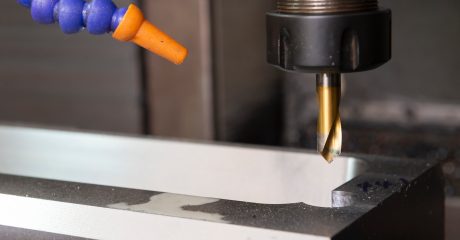Are you a machinist trying to decide between spot drills and center drills for your next project? Knowing when to use spot drills versus center drills can make all the difference in the accuracy and efficiency of your work. This guide will walk you through the essentials of both tools, providing practical insights to help you make informed decisions.
Understanding Spot Drills
Definition and Function of a Spot Drill
Spot drills are specialized tools designed to create a shallow indentation or “spot” on the surface of a workpiece. This initial spot ensures that the following drill bit stays on course, preventing deviation and ensuring precise hole placement. Spot drills are short and rigid, making them highly resistant to deflection during the spotting process.
When and Why Spot Drills are Necessary
The decision to use a spot drill depends on the need for precision rather than the depth of the hole. For instance, spot drilling is crucial when using a long, flexible drill bit that may wander, such as a jobber length drill bit. However, with rigid tools like carbide drills or screw machine length drills, spotting typically isn’t required. The rigidity of these tools ensures accurate placement, saving valuable time in the machining process.
Advantages and Disadvantages of Spot Drilling
Spot drills offer several advantages. They ensure precise hole placement and reduce the risk of drill bit wandering, making them ideal for achieving high accuracy. However, their use can add an extra step to the machining process, which might not be necessary for every project. Investing in more rigid drills can eliminate the need for spot drilling, streamlining your workflow.
Deciding on Center Drills
Definition and Purpose of a Center Drill
Center drills are designed to create a starting point for a lathe center, featuring a dual-tip design with a small pilot and a larger countersinking area. This design facilitates the creation of a hole that perfectly fits a lathe’s center, ensuring stability during the turning process.
When and Why Center Drills are Necessary
Center drills are primarily used in turning operations to prepare the workpiece for a lathe center. They are not typically intended for use in spotting, although some machinists use them for this purpose. Their design makes them ideal for creating a stable starting point on a lathe.
Advantages and Disadvantages of Center Drilling
One advantage of center drills is their affordability compared to spot drills. However, they come with notable drawbacks. The small pilot tip is fragile and prone to breakage, which can interrupt operations. Additionally, the typical 60-degree countersink angle is not ideal for spotting, as it can lead to inaccuracies in subsequent drilling operations.
Practical Scenarios: When to Use Spot vs Center Drills
Example 1: High-Precision Machining Tasks
For tasks requiring high precision, such as creating intricate components for aerospace or medical devices, spot drills are the go-to choice. Their design ensures minimal deflection, leading to exact hole placement critical for these industries.
Example 2: Preparing Workpieces for Turning
When preparing a workpiece for turning on a lathe, center drills are indispensable. They create a stable center point, ensuring the workpiece remains secure during the turning process and reducing the risk of wobbling or inaccuracy.
Example 3: General Drilling Operations
For general drilling operations where speed and efficiency are prioritized, screw machine length drills can often eliminate the need for spotting. Their rigidity allows for accurate placement without the extra step of spot drilling, making them a favored choice for many machinists.
Call Custom Tool Today!
Choosing between spot drills and center drills depends on the specific requirements of your machining task. Spot drills offer superior precision for exact hole placement, while center drills are essential for lathe operations. Understanding the unique benefits of each tool will enhance your machining efficiency and accuracy. For further guidance and to explore the best tools for your projects, consider reaching out to Custom Tool & Grinding for expert advice and quality solutions.
